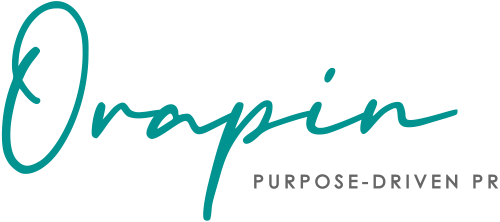
Is it better to just put your head down and quietly do your work? The answer is no. You should amplify your message and bring awareness to your work. Because it’s not about you, it’s about the people you serve who need to hear the important things you have to say.
Get PR inspiration from fitness instructors
Jess Sims, one of our favorite Peloton instructors recently explained that when she first started coaching with Peloton she felt really uncomfortable being in the spotlight and leading fitness classes. What made her qualified to get up there and tell people how to work out? Why would anyone want to hear her talk through a 45-minute class? Generally, she felt very uncomfortable with being on the stage, sharing her fitness passion, and with the idea that she should and could encourage others to be more fit.
Executive directors and CEOs need to get their message out in the same way fitness instructors and all changemakers do. If you are doing amazing work in the behavioral health field and have come up with new and innovative solutions to help individuals with addiction recovery, then don’t be afraid to share your story. People want to hear what you are doing, who you’ve helped, and why you believe your work is vitally important. People want to hear that others are going through struggles with addiction, too, and that there is hope for them or their family members. It is your job to show the world that there is a brighter future for the people you serve.
Just like we all need the Jess Sims of the world to show us how strong women can be, we need to hear from the changemakers, the thought leaders, and the people who are doing important work and have fresh ideas. Though you may feel uncomfortable with the spotlight, your audience needs to hear from you. PR is a necessity – not to stroke your own ego, but to bring attention to important issues, marginalized communities, and the world’s greatest problems that you are working to solve.
PR allows you to be a voice for the voiceless. PR allows you to be an example of bravery in the face of major adversity. You owe it to your stakeholders to start speaking up, to show them that the impossible is possible.
How do you get comfortable with being in the spotlight?
Remember first and foremost that you are doing the important work you do because you care an awful lot about your cause. People need to hear from you – your audience wants to hear what you have to say and your constituents rely on you to share their stories. Getting comfortable with the attention won’t happen overnight, so try these tips to ease into the spotlight:
- Reframe your mindset. Remember, PR isn’t about you. It is a necessary strategy to further your cause. If you are making the world a better place through your work, then you owe it to the world to do PR. Step out of your own way.
- Create a plan. Understanding your audience, your goals, and how you will reach them is where everyone should start. Your PR Blueprint will help you know what strategies you need to prioritize and what messages you need to get out first.
- Start small. If you are uncomfortable with the PR spotlight, pick off a few easy-to-digest items on the PR Blueprint and start there. Perhaps you begin by blogging, writing op-eds and bylines, or participating in a few local panels or speaking opportunities. Whatever feels achievable is where you should begin in order to get comfortable in the spotlight.
- Build on momentum. We always say, one PR opportunity begets another! Once you start gaining momentum and building your comfort level, keep going! Each speaking gig will feel easier than the last, each interview will build your confidence, and each published article will boost your visibility amongst key audiences.
Tell your story to maximize your impact
You lead your organization because you are working to create positive change. The media needs to hear your fresh ideas, your audience needs to hear about your innovations, and your constituents need you to be their voice. PR is one of the best ways to get your message out there. Paid ads, billboards, social media posts, mailers, and all the other marketing tactics can only take you so far. PR storytelling, when coupled with your other marketing efforts, is what really turns the dial. It is how people come to find understanding and affinity for your organization and cause. You may not feel comfortable with the spotlight when you first start your PR efforts, but if you stay out of your own way and give it a go, your audience will benefit and you’ll begin to realize the impact you’ve set out to make.

Diana Crawford is a seasoned public relations consultant with more than 15 years of agency, consulting, and in-house experience. She joined Orapin in 2013 and manages account services and client communications strategy development. She has worked across a variety of industries and has expertise with professional services, food/alcohol, health and wellness, lifestyle, sports, education, tech, and non-profit organizations.
